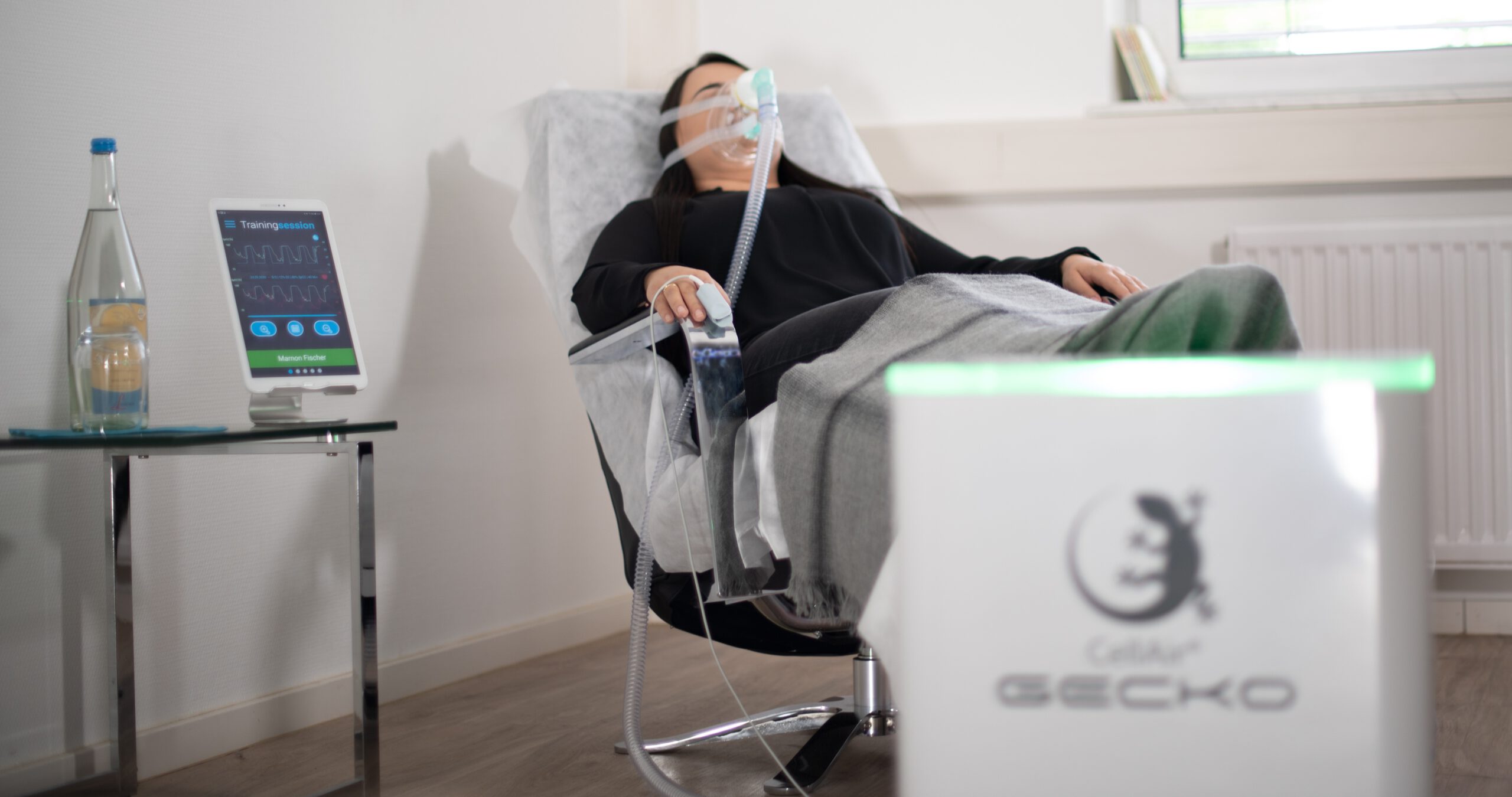
IHHT - Interval Hypoxia Hyperoxia Training
Pit stop for more physical and mental fitness
For decades, altitude training and targeted acclimatization training have been part of everyday life for top athletes and alpinists. The resulting increase in physical and mental performance helps to fully utilize performance reserves and increase physical safety. The further development of this method is IHHT, Interval Hypoxia Hyperoxia Training. The 2019 Nobel Prize in Medicine went to the three scientists William Kaelin, Gregg Semenza and Peter Ratcliffe, who have unraveled the secret of hypoxia training.
Hypoxia in particular contributes to positive reactions that help the body to supply all organs and organ systems with sufficient oxygen. It is not only the effect of increased red blood cell production, which is so popular with athletes, that contributes to the effectiveness of hypoxia training. As early as 2012, Gregg Semenza was able to document the influence of hypoxia on mitochondrial function and show that hypoxia accelerates the cell death of weakened mitochondria and at the same time stimulates the formation of new mitochondria. Science now assumes that a large proportion of civilization and chronic diseases are closely linked to damaged mitochondria, in addition to an autonomic imbalance. The studies of the three Nobel Prize winners now explain the positive experiences of hypoxia training users with a wide range of illnesses.
Energy metabolism at cell level
Interval hypoxia hyperoxia training is highly effective training for energy metabolism at cellular level. Our body consists of 80 trillion cells. In almost all of these cells, so-called mitochondria, the small power plants of a cell, supply the necessary cellular energy. In addition to the human ageing process, the lifestyle of the 21st century – oxidative stress, shortened sleep times, overstimulation, poor diet, medication, environmental toxins, lack of micronutrients, etc. – often leads to accelerated ageing of the mitochondria. In the long term, performance losses and numerous chronic degenerative diseases develop. Cell training uses a unique combination of hypoxic (O2-reduced) and hyperoxic (O2-enriched) stimuli, the regeneration potential of the cell can be optimally controlled. The hypoxic phase provides the important impetus for the accelerated proliferation of new, healthy mitochondria. Cell metabolism is reprogrammed by methodically destroying exhausted “old” mitochondria and accelerating the proliferation of healthy, physiologically “younger” mitochondria in the cells, i.e. the interval hypoxia-hyperoxia training improves the work of the mitochondria.
The IHHT method can, of course, also be used in healthy individuals, enabling athletes to improve their performance and effectively counteract unfavorable developments at an early stage. Because we are all under a lot of pressure and stress these days and we need to rely on our health and performance, interval hypoxia hyperoxia training is exactly the right way to go. It strengthens the mitochondria, which perform essential functions in the body’s energy production. This is important because a whole range of diseases appear to have their origin in the mitochondria. These include allergies, autoimmune diseases, bronchial asthma, high blood pressure, chronic bronchitis, CFS (chronic fatigue syndrome), burnout, depressive moods, type II diabetes, hormonal disorders, migraines, susceptibility to infections, headaches, sleep disorders and obesity.
The typical areas of application of IHHT are
- Burnout and exhaustion
- Sleep disorders
- Weight loss blocks
- Anti-aging
- Mental performance in old age
- Regeneration and detoxification
- Performance enhancement in sport

Training for your cells
During training, the client sits or lies in a relaxed position while breathing in air with a fluctuating oxygen content through a mask (hypoxia: low oxygen content of 9-15%; hyperoxia: high oxygen content of 36%). Meanwhile, measurement data is continuously recorded and monitored. In addition, the HRV analysis (HRV = heart rate variability) is recorded in parallel to show the positive influence of IHHT on various parameters (ratio of pulse to breath, ratio of parasympathetic to sympathetic nervous system, various values for heart function).
Depending on the client and training goal, a training cycle usually comprises 10 to 15 sessions lasting between 45 and 60 minutes. Initially, these take place several times a week. For clients who would like to use IHHT for longer afterwards, the interval can be increased after the build-up phase so that training only takes place once a week, for example.
